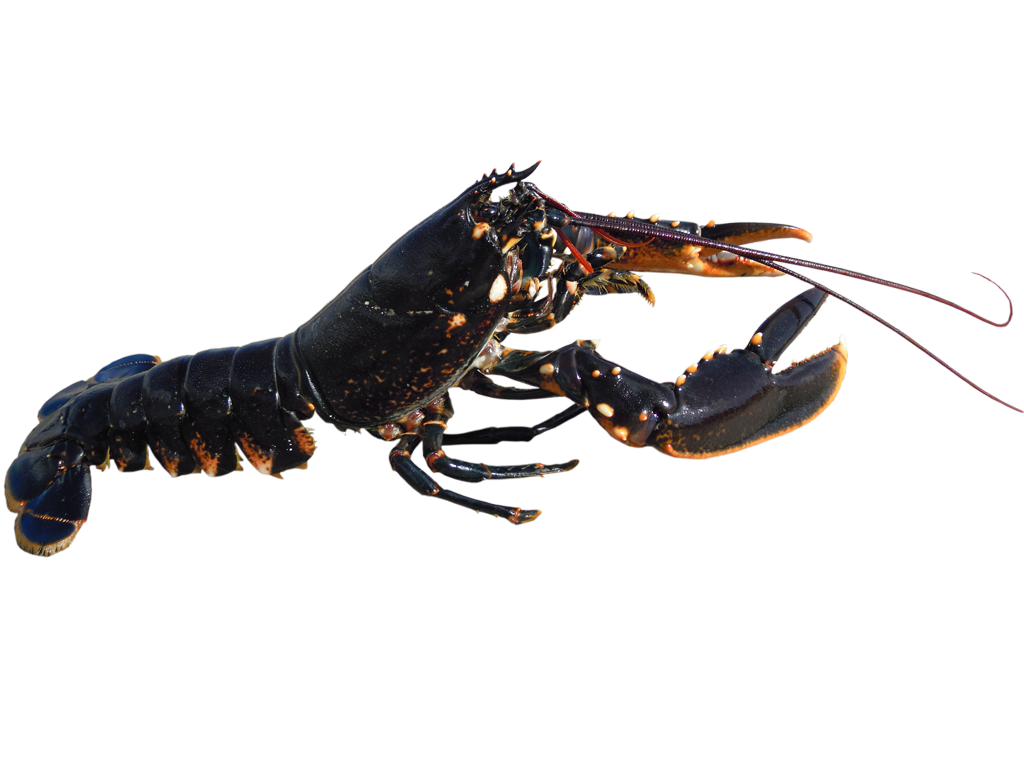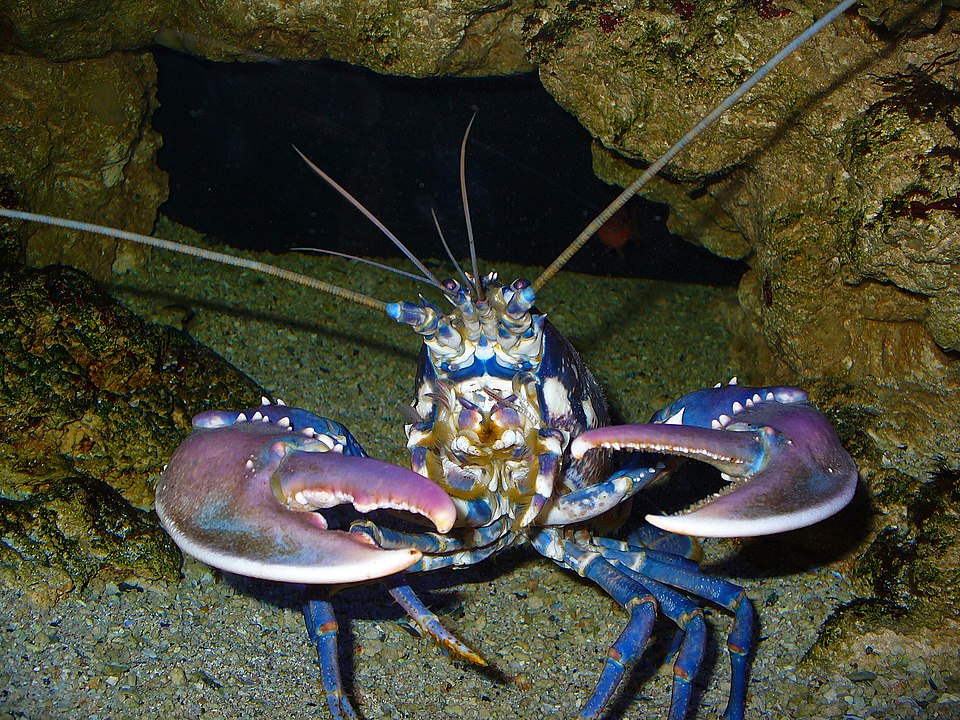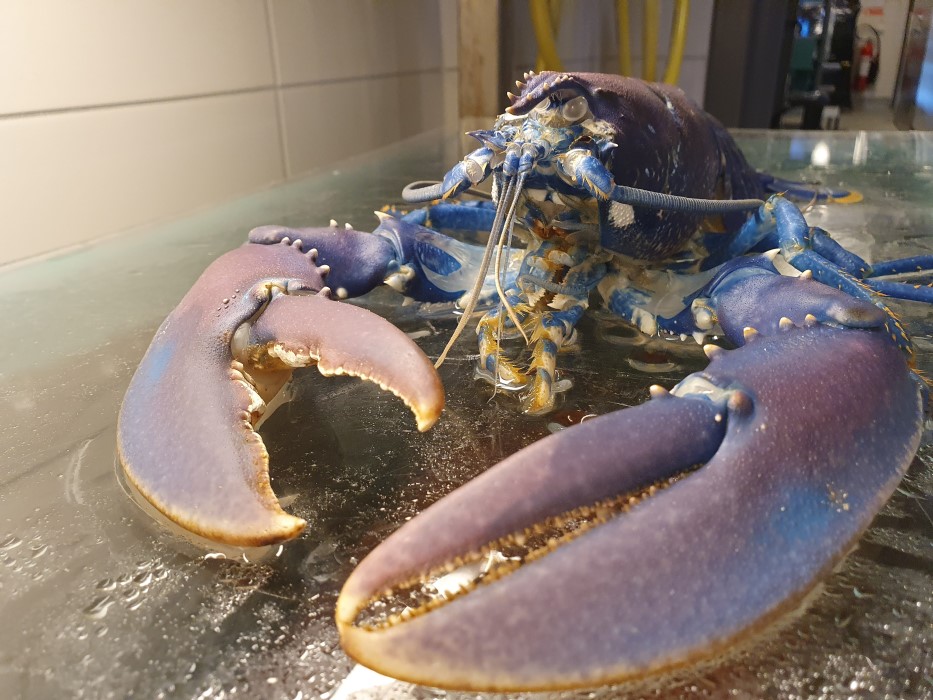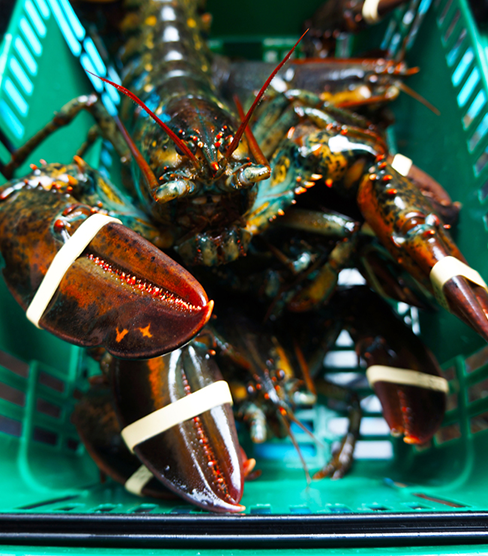European Lobster
Homarus gammarus

Crusher claw and pincher claw
Can you see two big claws sticking out of the cave in the aquarium? These belong to a European lobster – the largest crustacean in Swedish waters.
One of the claws is called a crusher claw and it is large and heavy. It is used to crush the shells of snails, mussels and crustaceans. The other claw is called the pincher claw and it is smaller but very sharp. It is used as a weapon, and to hold prey.

Photo: H.-Zell-CC-BY-SA
Two years from mating to larvae
Lobsters prefer to live on stony seabeds, preferably with small rocky outcrops or caves. Once lobsters find a good hiding place, they stay there for most of their lives. In summer, when it is time for mating, lobsters might go on short walks to find a mate.
When lobsters mate, the male transfers a small package of sperm to the female. She stores the sperm package in her body, and for a year her eggs mature inside her shell. After a year, she lays the eggs by attaching them under her abdomen. It is only then that the eggs are fertilised, when they pass through sperm package that the female has been saving. The female then carries the eggs for another year, before the larvae hatch. So it takes two years from mating until new lobster larvae hatch!
Lobsters rarely leave their caves and hiding places, except for during mating season.
Photo: H.-Zell-CC-BY-SA
The female lobster carries her eggs on her belly up to a year before they hatch. The species in the photo is an American lobster, but the way in which they carry their eggs is the same for both the American and the European lobster.
A newly hatched lobster larvae.
Photo: Hans-Hillewaert-CC-BY-SA
After a few moults, the young lobster looks like a miniature of its parents.
Photo: Katie-Sindle-CC-BY-SA
Moulting to grow
Like all crustaceans, lobsters need to shed their shell to grow. This is called moulting. Immediately after moulting, the new shell is soft and the lobster is very vulnerable, so it stays hidden until the new shell hardens. Mature male lobsters moult their shells about once a year, but females only moult every two years – otherwise they would lose their eggs.

Photo: Ellika-Nordström-Malmö-Museer
Fishing and threatening relative
Lobster is very popular to eat, so it is fished in large quantities – so much so that the number of lobsters has fallen dramatically in both Sweden and more widely in Europe. Special rules have therefore been introduced for lobster fishing. Another threat to the European lobster is the introduction of a close relative called the American lobster. The American lobster is larger than the European lobster, and can carry diseases that are fatal to European lobsters.

Photo: Nicole-Bratt-CC-BY-SA
Distribution in Sweden

West coast down to the northern part of Öresund.
White marking = Distribution
Threat based on the Red List

Trade regulations
CITES: Not listed.